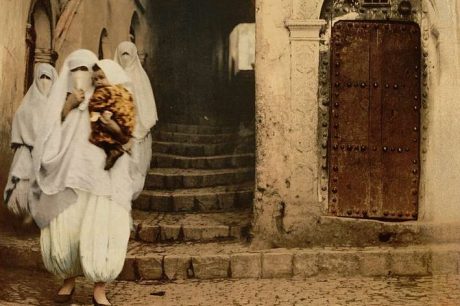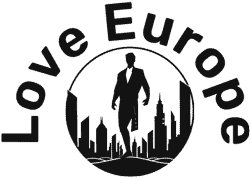Comparatively, historians have suggested, Jews fared better in the interwar years in the neighboring USSR. Outside the Versailles system, the Soviet state went to great lengths to publicly condemn and criminalize antisemitism, and its Jews were made citizens without any special protections. Instead, the Soviet system promoted Jewish cultural and economic development and political integration. It has long been thought that Jews in this interwar Soviet world were, very briefly, better off and freer from antisemitism than those in the neighboring world.
But in an excellent new book called Legacy of Blood, the historian Elissa Bemporad upsets this simple narrative, first told by the Bolsheviks, and long accepted by historians, of the interwar Soviet Union as a world in which antisemitism ceased to be a social and political problem, and Jews basically enjoyed full citizenship.

In fact, Bemporad shows, sudden Jewish upward mobility under the Soviets fed popular resentment, discrimination, and occasional bursts of antisemitic violence throughout the 1920s and 1930s. And yet the Soviets were often unwilling to punish, or even publicly acknowledge, this antisemitism because of the complicated politics. Widespread popular conflation of Jews with Bolshevism, the Soviets’ ongoing efforts to establish legitimacy and control over a multiethnic realm, and their claim that they were creating a revolutionary egalitarian society—all this made it politically undesirable for the Soviets to fully condemn antisemitism.
This created a dissonant situation for Soviet Jews, who were both empowered to an unprecedented degree and very vulnerable; formally equal citizens and informally disadvantaged. Paradoxically, loud Soviet propaganda about having eradicated the evil antisemitism of the czarist past—a centerpiece of the regime’s anti-imperialist, antiracist, egalitarian self-presentation—made it difficult for Jews in the early years of the USSR to raise the issue of antisemitism when they were targeted, let alone rely on the authorities for protection.
The story that Bemporad tells invites us to rethink the standard two-worlds framing of Jewish citizenship in Europe after 1919. The point is not that Jews did not benefit from Soviet rule, or were not in some ways better off as Soviet citizens versus as citizens in post-Versailles Europe. It’s that this comparison may obscure more than it reveals.
Rather than make comparisons, Bemporad’s book pushes us toward a different set of questions: Why were Jews not free from antisemitism anywhere in interwar Europe, no matter the political system, and even where it was criminalized and officially condemned? Why was antisemitism so hard to let go of in the interwar USSR? What did beliefs in powerful antisemitic myths, like blood libel and Judeo-Bolshevism, mean to the people who held them, and what made it possible for people to believe in them? And why have historians missed the story of social antisemitism in the interwar USSR before now?
Seeking answers to these questions can help us better understand the history of antisemitism in interwar Europe and in our own times. Today, we are grappling with the rise of antisemitism in contemporary Europe and the US. And we sometimes have trouble understanding how antisemitism can appear in countries that officially condemn it, and under political systems that define themselves in opposition to exclusionary, ethnonational political systems. Looking past states’ self-mythologizing about civic and political inclusion—and instead at popular belief systems that categorize peoples hierarchically, and that largely determine political possibilities—can help us see how and why antisemitism, like other racist ideologies, can flourish while being widely denied.
Legacy of Blood is about myths and how they function. Bemporad looks at how myths move people to believe incredible things and commit unspeakable acts; how political leaders negotiate and manipulate myths for their own ends; and how myths can work on our imaginations and interfere with our ability to see the past clearly.
Bemporad’s main subject is the blood-libel myth: the antisemitic folk belief that Jews kill Christian children and drain their blood to use for their religious rituals. This myth is often described by scholars as medieval, and seen as a sign of peasant backwardness when it appears in the modern era.
Bemporad insists that we should see it differently. The myth, she argues, is not anachronistically out of place but, instead, is a “by-product of modernization.” Indeed, the blood-libel myth was a conspiracy theory that Christians in late imperial Russia and the early USSR relied on—during this period of rapid change and perceived social crisis—to explain why their lives were a mess, and to express their fears and insecurities.
Throughout the 19th century, historian Eugene Avrutin has argued, most Russian Christians accepted the idea of Jewish ritual murder as a social fact. That is, they believed that their Jewish neighbors, with whom they interacted on a daily basis and lived for centuries in relative tranquility, murdered Christian children for their religious practices. Even so, accusations that led to court cases were rare, as were violent attacks against Jews.
This changed in the late 19th century. Towns and cities across Russia exploded in a series of popular antisemitic pogroms, in which tens of thousands of Jews were killed, raped, and wounded, and their homes and property were destroyed. In most cases, it was an accusation of blood libel against a Jewish neighbor that set off the violence.
The first of these large-scale pogroms occurred in the 1880s, at the height of czarist Russia’s accelerated modernization. The deadliest pogroms occurred during Russia’s civil war, between 1917 and 1921, when an estimated 150,000 Jews were killed. These pogroms were the worst antisemitic violence ever seen in European history, up to that point.
How do racist myths work to determine political and social possibilities, for better and worse, for different groups in a society?
The Bolsheviks vigorously and publicly condemned the blood-libel accusations and the pogroms, as they worked to consolidate popular support and take control of the fallen Russian Empire during the civil war. Vladimir Lenin announced the Bolsheviks’ intention to “tear the antisemitic movement out by the roots.” In 1918, he signed a decree on antisemitism and publicized it far and wide: recorded on phonograph records, it was played on the gramophones of propaganda trains, in workers’ clubs, and at Party meetings.
After triumphing and establishing the USSR, in 1922, the Soviets made antisemitism a crime. The new state worked to discredit the blood-libel myth and prosecuted many who accused Jews of it. All this, Bemporad notes, sets the interwar USSR apart from places like Poland and Germany, where popular prejudice toward Jews was no crime and antisemitism was central to national politics.
And yet the Soviets’ early public campaigns to discredit the blood libel and prosecute those who made the accusation did not destroy the belief system it was rooted in. Soviet Jews may not have been formally marked as less-than or not fully belonging, as Jewish minorities arguably were in post-Versailles Europe. But still, Bemporad shows, Soviet Jews were nonetheless often resented by their non-Jewish fellow citizens for violating understood hierarchies. They were perceived as stepping out of line—and their proper place in society—when they seized the new opportunities for equality and advancement under the new regime. Behind Soviet propaganda and laws that announced the creation of a post-antisemitic society, there was a thriving world of social antisemitism in the early Soviet period, which has been hard for historians to detect.
Bemporad reveals this undetected world by tracing blood-libel accusations, and Soviet officials’ responses to them. She also does so by bringing out voices from the Yiddish-language press, which captured Soviet Jews’ fears of being accused of the blood libel, and documented the cases in which they were. Despite the Soviet regime’s claims that it had ended the scourge of the blood-libel myth, belief in it and accusations against Jews persisted in the early USSR, including among Communist Party officials.
Another powerful antisemitic myth that circulated widely in Europe after the 1917 Bolshevik Revolution, including in the USSR, was the “Judeo-Bolshevik myth”: the idea that communism was a Jewish plot to destroy Europe’s nations. The Soviets had to reckon with the Judeo-Bolshevik myth as they struggled throughout the 1920s to integrate all nationalities into the project of building socialism and creating Soviet society. Such integration was particularly pressing, since it included ethnic groups that not only had resisted inclusion in the USSR, but also had been the main perpetrators of violence against Jews during the civil war.
Widespread belief in Judeo-Bolshevism created many problems for the Soviets. How to characterize the pogroms and condemn violence against Jews, for example, without appearing to confirm the close association between Jews and Bolsheviks—and thus provoking further backlash against Jews? And how to deal with the fact of folk-prejudice-fueled violence at the heart of the pogroms, a reality that threatened to undermine the invented Soviet narrative of the “brotherhood of the Soviet peoples,” on which they were trying to build a new state and society?
One way the Soviets tried to manage the Judeo-Bolshevism myth, Bemporad argues, was by distorting the history of the pogroms. Official Soviet narratives of the pogroms, developed during the 1920s and early 1930s, did not deny Jewish suffering; instead, they de-emphasized and universalized it. Official narratives rewrote the atrocities into class conflicts, and cast anti-Jewish violence as emblematic of the common suffering of Soviet citizens at the hands of the “counterrevolution.”
Such rewriting was not simply an academic matter, Bemporad argues. Instead, she suggests, this too was an act of violence against Soviet Jews. Official narratives suffocated open discussion about the racism behind the violence that Soviet Jews had only recently survived.
Many Jews (communists, writers, scholars, and young activists) participated in the construction of Soviet pogrom narratives that downplayed Jewish victimhood. Such participation, to this reader, reveals the oppressive conditions placed on Jewish integration into early Soviet society, the high price Jews were made to pay to feel part of the Revolution, and their limited ability to exercise their rights as citizens.

How is it possible for a group to be racialized, and disadvantaged by that prejudice, in a society that denies doing any such thing? How does it work that a minority group can be both empowered and demonstrably successful in a society, and also extremely vulnerable? How do racist myths work to determine political and social possibilities, for better and worse, for different groups in a society? And what can we learn about ourselves, and the worlds we inhabit, by taking seriously the made-up stuff that people believe and reflecting critically on the categories we all rely on to make sense of things?
Bemporad joins other scholars, such as Karen E. Fields and Barbara J. Fields, and Cathy Park Hong, in taking up these questions and paradoxes. Her book, too, reminds us that if we are ever to dismantle and be free of the racist worlds we have made, we need to understand where these ideas come from, how they get reinforced, and what gives them their power.
This article was commissioned by Joanne Randa Nucho. ![]()
Featured-image photograph by Paweł Czerwiński / Unsplash
Source link : https://www.publicbooks.org/minorities-and-myths-antisemitism-in-europe-after-1919/
Author :
Publish date : 2021-01-27 08:00:00
Copyright for syndicated content belongs to the linked Source.



